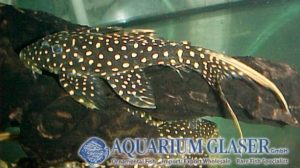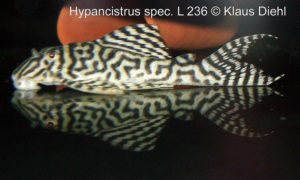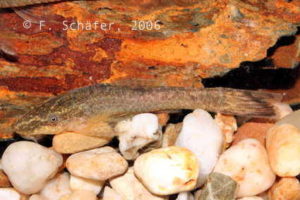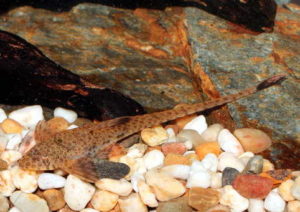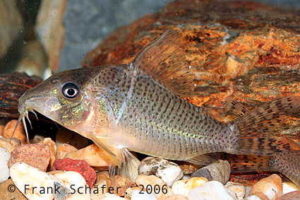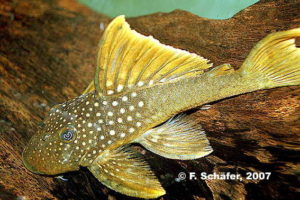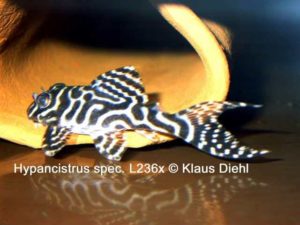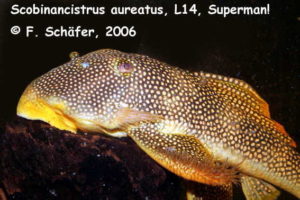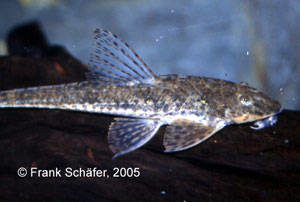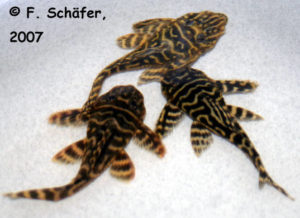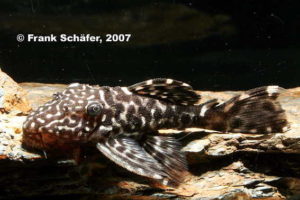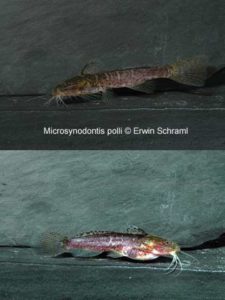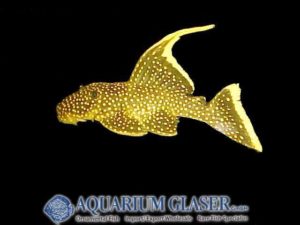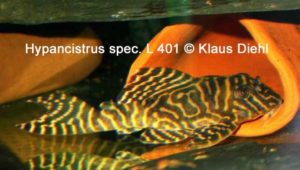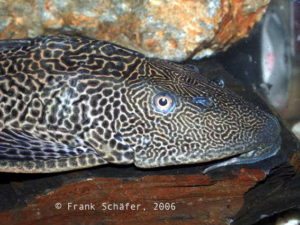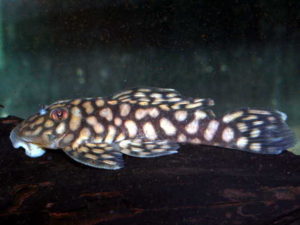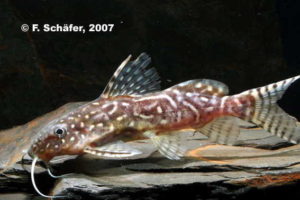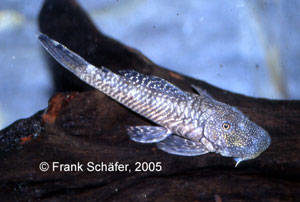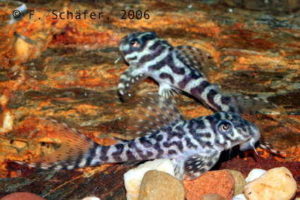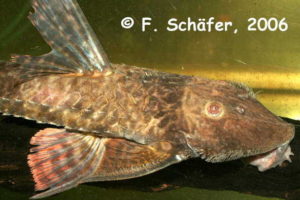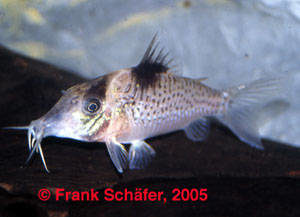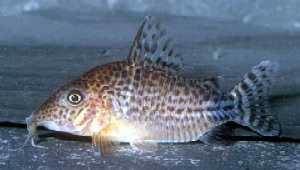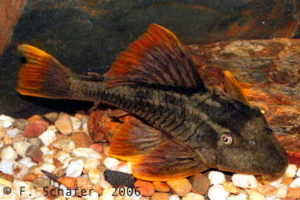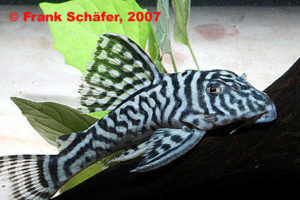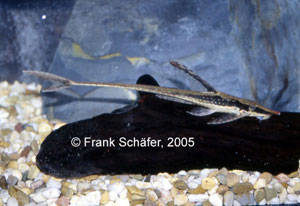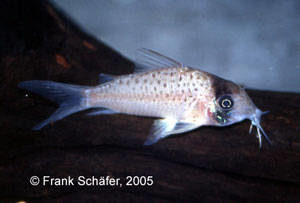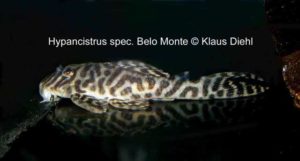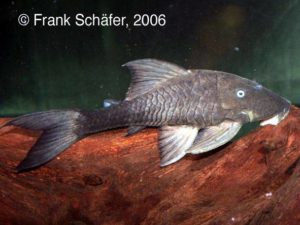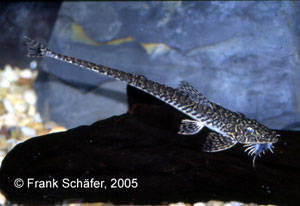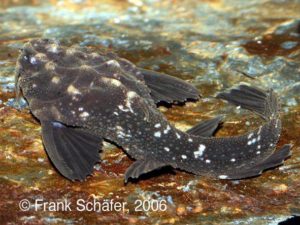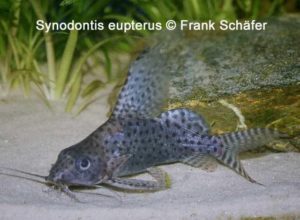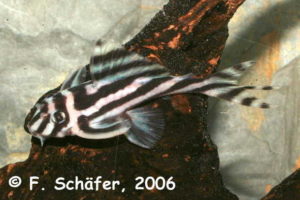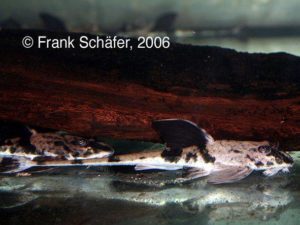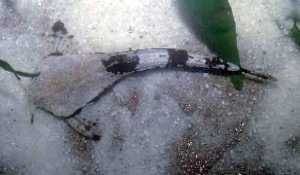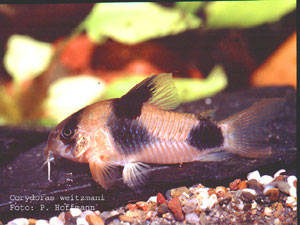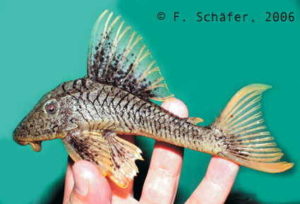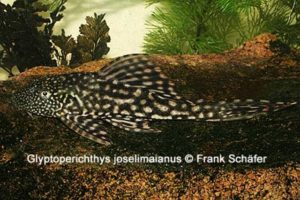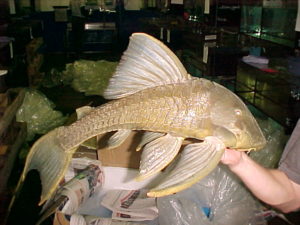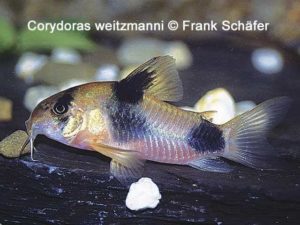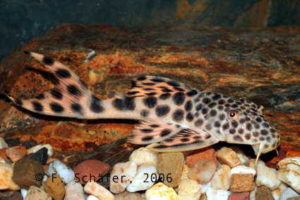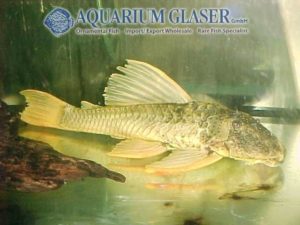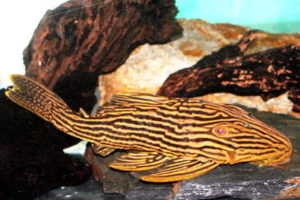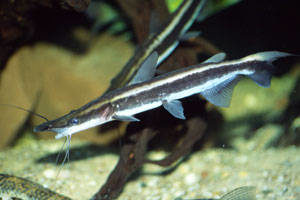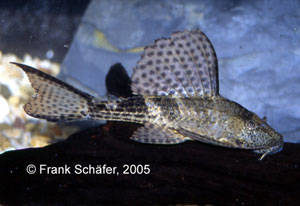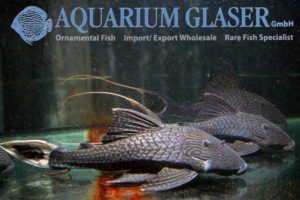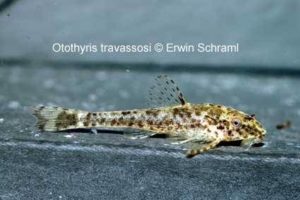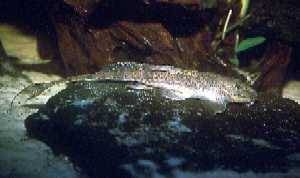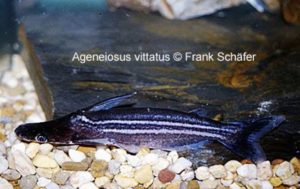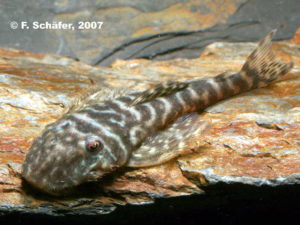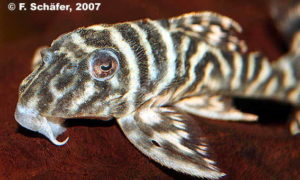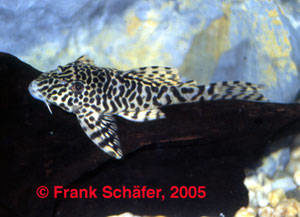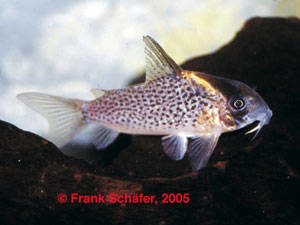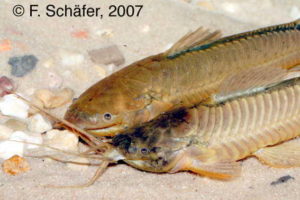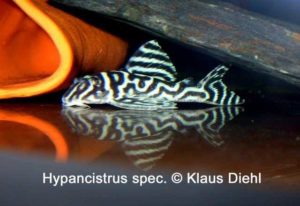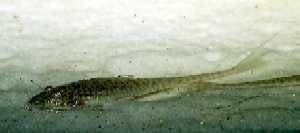Some weeks ago we proudly presented to you this Corydoras species, which we were able to import for the first time ever (http://www.aquariumglaser.de/en/fish-archive/corydoras-en/Corydoras_sp_aff_armatus_CW45_en/ ). Now the fish haved settled and developed such a nice coloration that we feel you will enjoy another photo.Text & photo: Frank Schäfer
10. Catfishes (713)
-
-
Panaque L90a Ojo Chico
L90 is a very variably colored species. This year we received very nice animals which have the bright halfmoon in the caudal fin orange red instead of white. The Spanish name (ojo = eye, chico = boy) does not emphasize on the coloration, but on the small eye which distinguishes L90 from other members of […]
-
Spatuloricaria sp. Black-White Peru
The genus Spatuloricaria comprises currently 11 accepted species. Members of this genus are large, splendid whiptail cats. There is probably no species that stays smaller than 30 cm in length, some become definitely larger. This means that the fish have to be kept in large aquaria. Spatuloricaria are sensitive against poor water quality. Thus a […]
-
Akysis vespa
Among the catfishes are several species that are able to take revenge for being caught by giving a poisonous sting. Although the venom has only mild effects on most people (burning, local swelling, pain) it might be even fatal for allergy sufferers. You should always keep in mind that our beloved honey bee is the […]
-
Coydoras duplicareus
Finally we received a well known species in beautiful specimens: Corydoras duplicareus. The only problem with this Corydoras gem is to distinguish it from its close relative C. adolfoi. Otherwise the fish is undemanding and will quickly find a new happy owner. Text & photos: Frank Schäfer
-
Corydoras sp. aff. armatus CW45
For the first time ever we were able to import another species of Corydoras. This species is for sure scientifically undescribed. It reminds one a bit on C. armatus due to the extremely long dorsal spine, but C. armatus never has the golden spot on the back which is present in our new species. The […]
-
Corydoras eques, C. sp. aff. armatus and Corydoras duplicareus
From the Brazilian state of Amazonas we received a species of Corydoras, which is long known to science but almost unknown in the hobby: Corydoras eques. This unique and extremely colourful species was collected near Anori. For the first time ever we were able to import another species of Corydoras. This species is for […]
-
Pseudorinelepis sp. L95
Last week we were able to import another catfish gem: L95, a scientifically undescribed species of the genus Pseudorinelepis, which is very closely related to P. genibarbis. Our specimens come from the Takutu river in the upper Rio Branco basin. These gorgeous fishes are collected mostly in relative large specimens, because the juveniles are not […]
-
Pseudacanthicus leopardus
The genus Pseudacanthicus currently comprises five described species. Three of them are known as aquarium fish. Additionally there are 16 L-numbers given for species of Pseudacanthicus which represent either species new for science or have a doubtful identity. Species of Pseudacanthicus are also known under their popular name “cactus catfish”, for the species are very […]
-
Phractocephalus hemiliopterus
At Aquarium Glaser not only small fish for private community tanks are stocked, but also real rarities for scientific institutions and large fish for public aquaria and zoos. A specimen for the latter category reached us now: a gigantic Phractocephalus hemiliopterus, more than 80 cm long. We stocked the fish for a Russian customer. The […]
-
Synodontis lucipinna (= dwarf petricola)
This beautiful Synodontis is a real dwarf compared with its numerous congeneers: it reaches only 8-10 cm (very old specimens in extreme spacy aquaria may reach 15 cm). In the hobby it became popular under the name “dwarf petricola”. Some species of Synodontis occuring in Lake Tanganyika (where S. lucipinnis is an endemic species) have […]
-
Hoplosternum punctatum
Plated catfish from the genus Hoplosternum are known in the hobby mainly from relatively large growing species, which can reach 15 to 20 cm in length. However, there also exist small species, like H. punctatum, which hardly grows larger than 7 cm. The natural distribution of this species is in Panama and in the rivers […]
-
Corydoras from the Rio Jamanxim – C. bifasciatus?
From the Rio Jamanxim in the state of Pará, Brazil, we received for the second time now beautiful Corydoras catfish. The Rio Jamanxim is a tribute to the Rio Tapajós. The first shipment of corys from there contained only long snouted animals, whereas the second shipment contained the shortsnouted counterpart. The new corys remind one […]
-
A new L-catfish!
Last week we were able to import a new yellow seam pleco belonging to the genus Baryancistrus. The fish originate from Sao Felix at the Rio Xingu. They differ from all other members of the genus from there (L18, L47, L81, L85, L177) by the almost black ground colour of the body. Almost no spots […]
-
Trachycorystes trachycorystes
This bizarre species has been described scientifically already in 1840. It is widely distributed in the whole Amazon basin. Nevertheless it becomes only rarely imported and so it is highly demanded by fans of predatory catfish who pay quite high prices for them. The species can attain a total length of about 45 cm. We […]
-
Pangasius bocourti
Shark catfishes have received their common name according to their swimming behaviour, which is very similar to the way several species of shark do swim. Similar to sharks is also that the fishes do permanently swim and only seldom take a rest.Nowadays they are also well known by their scientific genus name, eg Pangasius, because […]
-
Lampiella gibbosa
This charming little catfish species was described as early as 1908 by Miranda Ribeiro under the name Otocinclus gibbosus. But only when a group of reseaching aquarists (H.-G. Evers, M. Lacerda, and M. Beyer) managed to cellect the fish alive it became clear, how distinct from all other Otocinlus-like fishes this species really is. There […]
-
Loricaria lentiginosa
For the first time ever we were able to import one of the largest species of Loricarai, namely L. lentiginosa. The magnificent animals are about 40 cm long and thus fully grown. Like in all species of Loricaria they are paternal mouthbrooders. The male transports the eggs that stick together with its moutn until they […]
-
Corydoras longipinnis
We were able to import a new Corydoras species from Argentina, namely Corydoras longipinnis. This species has been scientifically described as recently as 2007 by Joachim Knaack. The new species is a close relative to the well known Corydoars paleatus and reminds one somewhat of the longfinned sport of that species. In Corydoras longipinnis only […]
-
Trachelyopterus galeatus
Already in 1766 this species was described under the name Silurus galeatus by the founder of the zoological nomenclature, Carl von Linné. It is extremely widespread in South America. Today this fish is classified in the family Auchenipteridae, and within this family in the subfamily Auchenipterinae. The species in Auchenipterinae share a very special feature: […]
-
Opsodoras stuebelii
The Doradidae family contains around 90 species in about 35 genera. Thus they represent only a minority among the huge number of catfishes existing in South America. But all dordadid catfishes are really bizzarre and desirable creatures for catfish enthusiasts. There are dordaid catfishes that reach around one metre in length, but for Opsodoras stuebelii […]
-
Hypancistrus L236xx
The Brazilian species of the genus Hypancistrus are currently not allowed to be exported from the country. Thus L-numbers of this genus, like L236 from the Rio Iriri, are available as bred specimens only. Among the last brood we received was one extraordinary specimen, which is depicted here. Text & Photo: Frank Schäfer
-
A new pleco from the Rio Sao Francisco
The Rio Sao Francisco is a large river in southern Brazil. It´s length is around 3.200 km. The ichthyofauna of the Sao Francisco is comparably good explored, as there plans for an irrigation project. So the environment has to be explored and there were and are several studies on the fish fauna. We currently received […]
-
Just in: L114
After some time we were able now to import again L114. It is a member of the beautiful Pseudacanthicus-leopardus species group. The members of this species group can reach 25-30 cm total length, some sources give even 40 cm. They originate from the Rio Negro basin near Barcelos in Brazil. They are omnivorous, but prefer […]
-
Trichomycterus alternatus: In the shadow of the vampire
female Sometimes fishes have the same problems as human beings: one cannot choose his relatives! And so the good reputation of a small fish sometimes is destroyed due to the bad one of a cousin. The most by far feared species of fish in South America is the so-called candiru. In fact, the name candiru […]
-
Wonderful German bred Zonancistrus pulcher (L168) arrived!
Photo: Frank Schäfer
-
Import season for Orinoco-Plecos has startet!
The Rio Orinoco is with more than 2.000 km length one of the biggest rivers of South America. About 3/4 of it´s length it runs through Venezuela, the remaining 1/4 belong to the territory of Colombia. The Brazo Casiquiare connects during high water levels the Orinoco-sytem with the Amazon-sytem via the Rio Negro. The import […]
-
Brachyplatystoma
The catfishes of the genus Brachyplatystoma are some of the most important foodfish in the basins of the Amazon, the Orinoco and the countries of the Guiana shield. Some of them may reach a length of 360 cm and a weight of 200 kg. Many thousand tons are landed each year, which led to local […]
-
Baryancistrus L18, L81, L81n, L177
The main collecting season of the beautiful gold seam sucker cats of the genus Baryancistrus starts around end of may and lasts until the end of september. Although these fishes are common in the wild, live in shallow waters and are traditionally used as food fish, they cannot be connected with one of the about […]
-
Auchenipterus nigripinnis
For the first time ever we were able now to import a catfish from Argentina which is new for the hobby. It looks amazingly similar to the Asian shark, Pangasianodon hypophthalmus (a well known synonym of that species is Pangasius sutchi). The identification of the new fish wasn´t easy, but thanks to Ingo Seidel from […]
-
Corydoras sp. „Uruara“ CW037
(Nov.13th 2008) This beautiful Corydoras is from Brasil, from Rio Uruara , which flows into Rio Curua Una south of the Amazonas to be exact. It was imported to Germany only in very small numbers. The more pleasant it is that bred ones are available for the first time. The catfish recall very much of […]
-
L90 Panaque var.JUANJUI
Last week this very attractive variant of L 90 arrived from the vicinity of Juanjui (Peru). They are very intense light-dark patterned fishes with glowing red eyes . The white filaments of their caudal fin give them an additional elegance. Feeding with special food (shrimps, or red discus food)can change fin colors to a strong […]
-
Synodontis granulosus
(June 6th 2008) Actually we are able to supply one of the most beautiful member of the Synodontis family. They come from the Lake Tanganjika so they need harder water with a higher pH. These are extremely active fishes which grow up to 25cm, so they should only be kept in bigger tanks. Adults are aggressive […]
-
Glanidium melanopterum
(09.May 2008) A real strange fish was now imported by us from the south of Brasil. This fish belongs to the Glanidium family and shows a size of about 40cm, which is really big for such an fish. They look very calm, but during the night they start to eat….everything what they can get into their big […]
-
Oreoglanis siamensis
(21.April 2008)…and again we got something very rare: Oreoglanis siamensis. But only a very few pieces. They live in the Mekong area and the Chao Phyraya basins. In the northern part of Thailand you can find them in the mountain area of Mae Nam Ping and Doi Chiang Dow. They are found in fast floating […]
-
Corydoras duplicareus
(17.April 2008) An old friend and also a newcomer: Corydoras duplicareus. Not a long time ago, this beautiful catfish was sold as Corydoras adolfoi. For a non-expert the differences are not clear on the first look. The main difference is the black band, which is more wide than from C. adolfoi. It is definitely a […]
-
Hypancistrus spec. L 173b
(19.Feb.2008) After a long break back in our stock: German offspring of L 173. This very rare Hypancistrus is probably the most closely with L 46 related species. As juveniles they look like zebras with an irregular stripe pattern. Their final size is a little larger than L 46 L also their clutches are larger. […]
-
Corydoras sp. C 115/116
(16.Jan.2008) This Longnose armored catfish was caught by Hoffmann & Hoffmann in Peru in a small canyon 50km away from Puerto Maldonado toward Boliva in 2004 and brought along legally. The very variable drawing, from monochromatically grey to big black spots on the sides of body (hence C115 and 116) is interesting. The breeding is […]
-
Hypostomus isbrueckeri
(28.Nov.2007)At the moment we have a group of nearly full-grown Hypostomus isbrueckeri in stock. The here pictured male is easily distinguishable from its partners by the bright colors of the caudal fin. This is probably the only Loricariid species which shows such a pronounced gender difference. Their origin is the border region Brazil, Argentina, and […]
-
Megalancistrus parananus L234
-
L 27 Pan.cf.nigrolineatus XINGU
Currently available: from the Rio Xingu we got this really beauty L-27 male. With a total length of about 40cm is this fish adult. He is definitely pubescent, which you can see on his long beard and Odontoden. The real nice black/golden contrast makes this fish very interesting!
-
Pseudacanthicus spec. Typhoon
(2nd.Nov.2007) For the first time we can offer Pseudacanthicus spec. Typhoon. This extremely attractive Cactus Pleco comes from Brazil, its origin is kept as a secret, so that no information concerning the river were they have been caught can be made. In the appearance they reminiscent of Pseudacanthicus spec. “Titanic” L 273, the colour (black […]
-
Ancistrus spec. L 352
Our photo shows a pair of Ancistrus spec. L 352, one with 6 – 7 cm very small remaining loricariid from the Rio Iriri. In the view from above the different body forms can easily be be recognized. This and the characteristic beard of the males makes a differentiating of the sexes quite easy. As […]
-
Hypancistrus spec. L 236
„Simply the Best “: Some days ago we could import some of this beauties. With a size of approx. 10cm the white of the here illustrated male shows a fantastic intensity. It seems that one of imported fishes is a not less beautiful female, and so we hope to be able to offer some days […]
-
Hisonotus notatus
July 2006 From southeast Brazil we could import some rare pieces from the relationship of the popular Otocinclus species. In its homeland Hisonotus ornatus inhabits with weeds infested waters. It may not be kept too warm. 24°C probably represents the reasonable upper limit. The requirements for their maintenance do not differ from those of the […]
-
Rineloricaria melini
As a further german bred rarity we can offer Rineloricaria melini at present. Our specimen of the probably most attractive Rineloricaria species have with 9 – 12 cm length already attained full growth and are of outstanding quality. Their origin is the area of the Rio Negro where they live in black water biotopes. Like […]
-
Corydoras sp. C 71
August 2006: With Corydoras spec. C 71 we could import a further rare species from Brazil. They originate from the Rio Arua in the Federal State Para. With a final size of 6 cm they belong to the medium sized Corys. The requirements for their maintenance might be the same as for other Corydoras species. […]
-
Baryancistrus demantoides L 200 High Fin
From Colombia we could import expressed beautiful L 200 High Fin. Now we have very attractive partially completely yellow colored specimen of the species Baryancistrus demantoides in stock. They will get only about 15 cm long and remain thereby substantially smaller than the also with the number L the 200 labeled Hemiancistrus subviridis. Compared with […]
-
Hypancistrus spec. L 236x
November 2006: At Christmas we would like to present a star at the catfish heaven. We can offer some offspring of the queen imperial zebra Hypancistrus spec. L 236x, a beautiful and very looked for species. They come from a German breeder, who had the luck that the two from us imported animals formed a […]
-
Scobiancistrus aureatus L 14
December 2006: Last week received we a really impressive, male Scobiancistrus aureatus. With a length of about 30 cm it might be attained full growth. The strong spines on the gill cover (Interopercularodontodes), as well as on their pectoral fins are remarkable. As most L-catfishes from the Rio Xingu they like warmer waters, for their […]
-
Rineloricaria sp. „Colombia“
A remarkable species which came in in one of our import from Colombia. These fishes also originate from the Rio Chacu in the northern tip of the country. Because of the many bristles of the male this species has been falsely determined as Rineloricaria latirostris. A comparison with the pictures (see Mergus Catfish Atlas Part […]
-
Hypancistrus spec. L 340
Freshly arrived from Colombia: the Megaclown L 340. We can offer one of the most beautiful and at the same time most variable Hypancistrus “species” in very good quality. The animals already reached maturity, so that the outstanding contrast should remain. In their requirements for maintenance they do not differ from their Brazilian cousins, warm, […]
-
Leporacanthicus sp. „NEW“
April 2007: We received a particularly beautiful easter surprise this week from Colombia. The representative of the genus Leporacanthicus illustrated here is probably the first and only specimen on the market. It reminds of the in the Orinoco occurring L 240 and L 241, as well as of Leporacanthicus cf. “Venezuela”. But its white spots […]
-
Trichomycterus alternatus
One of the in the aquarium most easy to keep pencil catfishes is Trichomycterus alternatus. This species, originating from the Rio de Janeiro region, reaches an overall length of for 10cm and can be maintained in aquaria starting from 60cm length. These very shy fish, reminding in their appearance of our in Europe native Stone […]
-
Microsynodontis polli
Microsynodontis polli is one of three poorly documented pygmy Synodontis species, the other two being M. lamberti and M. batesii. They origin from Western to Central Africa, M. polli is reported for the upper Niger in Guinea and Liberia. Their maintenance is no problem as long as the water is soft and slightly acidic, although […]
-
Baryancistrus sp. L-81 HIGHFIN
September 2003: This week we received from Brasil a really unique fish: L-81 HIGHFIN. Our supplier advised us to send this fish and it really was worth waiting….was it not?(Photo F. Schäfer, Text K. Diehl)
-
Hypancistrus spec. L 401
This in the DATZ 12/05 introduced very beautiful Hypancistrus variant is at present in a small number available. The animals remind in their habitus of L 333 and with these are also occasionally confounded. In the figure they are more delicate, somewhat more stretched and reach only one overall length of maximally 12 cm, while […]
-
Liposarcus pardalis
Liposarcus pardalis has enormous area of origin that enclosure nearly the entire Amazon basin. It is found in different waters types, herefrom results a large adaptability for the maintenance in aquaria. According to the size (> 40cm) enormous food quantities are consumed. In Southeast Asia they are bred in large numbers and so wild caughts […]
-
Spectracanthicus (= Oligancistrus) zuanoni L 354
Spectracanthicus zuanoni L 354 originates from Rio Xingu and the Rio Iriri in Brazil. It has been described scientifically only in 2014 (see http://www.aquariumglaser.de/en/archiv.php?news_id=1195). The fish belongs to the same species as L 20, with however clearly larger white marks, so that the design reminds of a black net on a bright background. The reddish, […]
-
Synodontis angelicus
From the Katanga province of the Congo we could import some partly striped specimen of Synodontis angelicus. Formerly these forms were regarded as the subspecies Synodontis angelicus zonatus, today they are considered however as a color variant of the species. In any case they are very decorative and should not be missing in Congo basins […]
-
Chaetostoma pearsei L 187
This Chaetostoma species is imported in regular intervals from the upper Orinoco through Puerto Ayacucho. This catfish is very difficult to differentiate from L 147 and L 188. L 188 has often described in the literature as C. nudirostre. C. pearsi lives in fast streaming mountain brooks and therefore needs in the aquarium oxygen rich […]
-
Hypancistrus spec. L 66 „King Tiger“
As one of the early imported representatives of the so-called L-number catfishes L 66 has already an unbroken popularity. At present we can offer beside wild caughts also very beautiful german breds. Such bright grounded L 66 are at least as attractive as the most „newer“ Hypancistrus species. With a final size of approx. 15 […]
-
Spatuloricaria sp. Magdalena
We imported some of these very much pleasing Loricarian species from Columbia. Like most of the Spatuloricaria species it can become quite large, however they probably will not reach the described 40-50cm like other species. Since they already exhibit the typical secondary sex characteristics (men with “beard”), they might exceed their present size of approx. […]
-
Corydoras ephippifer
This true mailed catfish species was imported from Belem (Brazil). The latin name „ephippifer“ is a combination from „ephippium“ (lat. = saddle) und „ferre“ (lat. = bearing) referring to the black spot on the basis of the dorsal fin. The animals reach a maximal length of 6 cm. They should be kept in a group. […]
-
Corydoras spectabilis
In fact we have ordered Corydoras guapore from Manaus,…but what we got was totally different. We got for the first time Corydoras spectabilis, which is found in the upper Rio Guaporé around Vila Bela. (Photo E. Schraml, Text Aquarium Glaser)
-
Cochliodon sp. YELLOW SEAM L 360
From the Rio Jamanxim in Brazil we could import a small number of L 360 with nice yellow-orange fins. They are unproblematic in the maintenance need however a high portion of vegetables in their food. Similar as Panaques this over 30 cm large growing species specieseats large quantities ofr bogwood. A high performance filtering unit […]
-
Hypancistrus spec. NEW
September 2006: Latterly we received this very rich contrasted male of an unknown Hypancistrus species. Certainly here exists a similarity to L 333 and also Hypancistrus spec. Xingu. It gets more and more difficult to attach single fishes to existing L numbers or to a known Hypancistrus species, because there are not enough hard criteria […]
-
Sturisoma sp. „Colombia“
This for science unknown species was imported with a unique shipment from Colombia. Sturisoma sp. „Colombia“ was found in the Rio Chaco in the North of Colombia. This elegant Sturisoma species differs from the short finned species, which live on sandy habitats as well as from Sturisoma festivum by difference in colouration and body form. […]
-
Corydoras sychri
This true mailed catfish comes from Peru, Rio Nanay and Rio Amazonas near to Iquitos. Lately these corys are imported in several variations of pattern colouration. This variability makes it difficult to determine this species. They are very similar to C. atropersonatus. C. sychri is a typical representative of the long nosed Corydoras group. This […]
-
Hypancistrus spec. „Belo Monte“ (L 287, L 399, L 400)
The denomination of this beautiful Hypancistrus is still disputed. It run long time under the number L 287, so it is named on our stock list. Recently it is called L 399 and/or L 400, the origin is the Rio Xingu, where it gets caught in the neighbourhood of Belo Monte. This species belongs into […]
-
Panaque cochliodon
December 2005: After years when no Panaque cochliodon (Panaque suttoni, P. suttonorum) were imported, now again few individuals reach us. Whether environmental problems or the civil war in parts of Colombia are responsible for their non appearence, can not be judged from a distance. We are glad to see this in former times not rare […]
-
Crossoloricaria cf cephalaspis
The 5 species of the genus Crossoloricaria are all looking very similar to the flounder Loricariid genus Pseudohemiodon. These fish have as well a flattened body form, small eyes lying distally on the triangularly formed head. The difference between these two genii is the missing of the ventral bony plates of Crossoloricaria. Only at the […]
-
Amaralia hypsiura
January 2001: At present we can offer Amaralia hypsiura for friends of the extraordinary . This rarely dealt catfish attains full growth with approx. 15 cm length. It originates from the Amzon and there it feeds mainly, as gastric examinations of freshly caught fishes documents, predominantly the spawn of other fish. Fortunately they are not […]
-
Synodontis eupterus
-
Hypancistrus zebra L 46 „Double Tailfin
November 2006: At present we can offer beside „normal “German bred zebras (surely the most demanded of all L-numbers) an individual with a doubled lower caudal fin. This change of the fin is probably to be led back on a disturbance in the embryonic development. If someone hopes to breed a race of „veil tailed […]
-
Loricaria simillima
Loricaria simillima has a very wide distribution in South America. It is found in the Orinoco-, Amazon- and La Plata basins. A result of this large area many different color forms are known, which differ clearly regarding coloration and pattern. The species occurs in different water types. Black water forms are more demanding in maintenance […]
-
Bunocephalus sp. „Black/White“
The banjocat new imported from Peru immediately attract attention due to their interesting colouring in contrast to other species of the same relation circle. Therefore some animals are almost unicoloured white while other specimens mainly show some irregular black markings. The care of this species does not differ from that of other relatives of this […]
-
Corydoras weitzmani
This is one of the most spectacular representative of the Corydoras genus recently imported. For us this is the ultimate Corydoras. Its closest relative is probably Corydoras panda. The body pattern is similar to the recently described Corydoras tukano. This species was caught by the authors in September 2004 in the riverine system of the […]
-
Cochliodon spec. var. marbled L 360a
From the drainage basin of the Tapajos arrived a new, until now not imported loricariid catfish at our facility. Body form and yellow fin seams remind strongly of L 360, the body and parts of the fins however exhibit a veining atypical for L 360. In their maintenance requirements they might probably not differ from […]
-
Glyptoperichthys joselimaianus L 1, L 22
Glyptoperichthys joselimaianus the “White Spot – Glycopterichthys” originates from the Rio Araguaia, one of the main tributaries of the Rio Tocantins in Brazil. There it inhabits different habitats, it was found e.g. on deadwood and also on flooded meadows. Natural water conditions (white water) do not have to be copied for maintenance, L 1 are […]
-
Panaque spec.
June 2006: Just freshly arrived! Also for „old stagers“ there are again and again genuine surprises with us. In a shipment from Peru we received today several particularly delicate Loricariids, which represent a petite alternative to the frequently maintained Hypancistrus species. However their size of (50 – 70 cm) probably exceeds the possibilities of most […]
-
Pseudoplatystoma corruscans
The rarely traded largest shovelnose catfish Pseudoplatysoma corruscans originates from the Rio Sao Francisco in Brazil. This predator becomes quite large (approx. 180cm) and heavy (100 kg). They like to stay in groups and socialize well with rays, big charazins, cichlids or other catfishes. (Photo F. Schäfer, Text K. Diehl)
-
Corydoras weitzmani
February 2006: We are pleased to be able to offer you the first offspring of a legend. Now offspring of the recently again discovered and in the last year for the first time to Germany imported Corydoras weitzmani are available. Fortunately this beautiful small, at Corydoras panda reminding species, could quite fast be spawned by […]
-
Ancistomus sabaji L124 „Big Spot“
Ancistomus sabaji – Hypostomus spec., Peckoltia spec.? A fish with many names! There is hardly another L number catfish where the confusion regarding the nomenclature is as large as with this species. This is a result of the generous allocation of numbers (L 75, L 124, L 301 and LDA 2) for this fish. One […]
-
Hypostomus luteus
From southern Brazil and northern Argentina originates the probably most beautiful representative of the genus Hypostomus. Contrary to many other loricariids they become more beautiful with increasing age, since the portion of the yellow body parts constantly increases. Their southern area of origin suggests a tolerance in relation to low temperatures. They can be can […]
-
Panaque spec. „New Royal Golden Thunder“
September 2006: This week we succeeded in importing several of this beautiful new Panaque from Brazil. In their appearance they remind of L 27, are however flatter and slimmer than these. In addition they possess a larger mouth and their dorsal fin is smaller. These characteristics let assume that they originate from strongly flowing river […]
-
Sorubim lima
The shovel nose catfish is a classical appearance in the hobby. Even in the most common aquarium shops you can find this species as juveniles with a length between 8 and 10 cm. These fish are very appealing when they are small, but one should reconsider an impulsive buy here because these fish can grow […]
-
Hypostomus sp. „Chaco“
A close relative of the well known common plecos, is shown at the time of the importation not fully grown yet. This fish can easily grow up to 30 cm in length. This pleco is a harmless solitude fish, very well suited for the cichlid aquarium. It is an animal who has a nocturnal way […]
-
Panaque spec. „Papa Ojo Chico“ L 90a
With L 90a we can offer at present one of the most beautiful Panaque species. Especially the extremely long, orange colored filaments of the caudal fin are remarkable. In addition, the discrete black markings on the noble-grey colored body let them appear very elegant. With the purchase of these fishes their final size (over 30cm) […]
-
Otothyris travassosi
This rarely imported catfish species originates from the federal states Bahia and Espirito Santo at the coast of brazil. With only 3cm of total length it belongs to the smallest Loricariids. There habitats are small and fast running streams. They mostly stay in areas thickly covered with vegetation. Otothyris travassosi is not a fish for […]
-
Hemiloricaria eigenmanni
The majority of the species formerly known as Rineloricaria nowadays belongs to the Hemiloricaria, just like H. eigenmanni from Venezuela. The dissemination area of H. eigenmanni is located in the Illanos of Venezuela. Kept in the aquarium H. eingenmanni has turned out to be rather undemanding. Therefore these Loricariidae, which grow up to approx. 18cm, […]
-
Ageneiosus vittatus
July 2002: For the first time we could import Ageneiosus vittatus from Peru. Slopehead catfish of the genus Ageneiosus are particularly noticeable by its strongly flattened head. These predators can reach an overall length of 30 cm. For the maintenance large basins are necessary. A dark bottom, some stones and bogwood should be brought in […]
-
Ancistrinae spec. L 189
Several adult specimen of L 189 the wormline – Orinko catfish arrived with an import of L 257 Pseudolithoxus tigris. On this shown male, the odontodes on the head, breast and ventral fin are clearly visible, that absolutely states a belonging in the Pseudolithoxus group. Puberty is approximately reached at 7 cm, it’s end size […]
-
Hypancistrus spec. Xingu
From lower parts of the Rio Xingu we received very high-contrasted Hypancistrus spec. Xingu. In their appearance they arrange between L 333 and fishes of the L 66 group. But they are clearly more flattened and stretched than L 333. From L 66 and their relatives (e.g. L 236) they can be distinguished by the […]
-
Peckoltia. spec. L 134
From the Rio Jamanxim (Brazil) comes one of the most attractive members of the genus Peckoltia. L 134 is very variably marked: as well as individuals with stripes there are also specimens with large round spots on the body. It is not known whether this difference in colouration denotes sex, but in at least one […]
-
Corydoras sp. aff. kanei
This new and undescribed true mailed catfish differs from C. kanei by a golden band on the shoulder. The very attractive fish originate from the Rio Jamaxin (Brazil). Their final length is 5 cm. C. kanei has been bred successfully on several occasions and Seuß (Die faszinierende Welt der Corydoras, Landbuch Verlag Germany, 1997) reports […]
-
Callichthys spec. NEW
From southern Brazil we could import a probably new Callichthyid catfish species. The sexes can be easily differentiated on the basis the dark pattern at the head of the females. In their homeland they inhabit diverse waters types. As accessory air-breathers they can move over land if it gets necessary to reach other waters. Their […]
-
Hypancistrus spec. L 173
March 2005: Freshly arrived: Beautiful German breds of L 173. For the first time we can offer thereby more than a “handful” of these wonderful rare pieces. The large variability of their pattern is remarkable. The bluish glow is common in all the white of their fins. (Photo & Text K. Diehl)
-
Pseudohemiodon thorectes
This catfish coming from Bolivia, belongs to the smallest of his relatives, measuring 13 cm maximum. It is mostly getting imported by travelling aquarium hobbyists. Regarding the water condition this kind is rather adaptable, as guide values of up to 400 µS/cm and a pH-value of 7.6 were measured. Approx. 25°C are quite enough for […]
Big from Peru!
As last week 2 very huge boxes arrived from Peru the whole Aquarium Glaser team was full of excitement to their content. Then two giant specimens of the giant Panaques LDA 65 appeared in the best condition. With a length of about 60 cm, they should be mature, for “normal” tanks they are obviously not suitable. In very large tanks, they are certainly interesting fish, and could be for example socialized with stingrays or large predatory characins or catfishes.







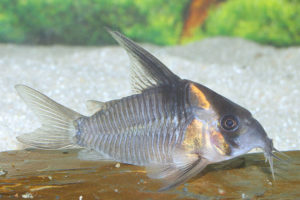
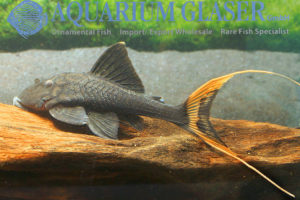
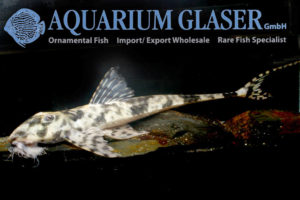
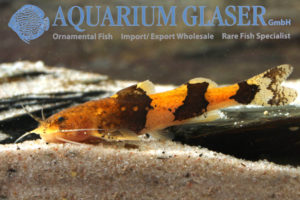
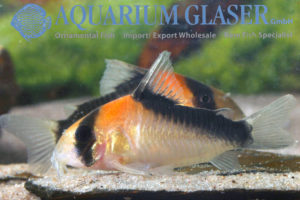
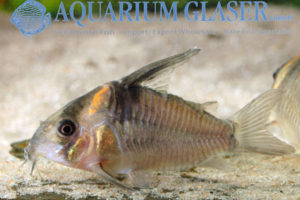
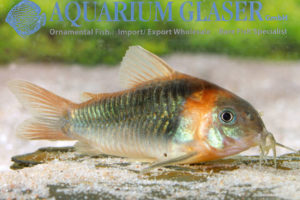
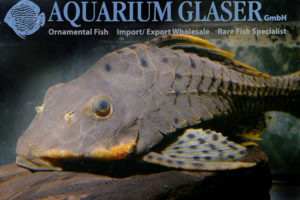
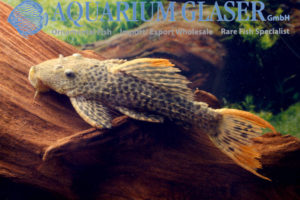
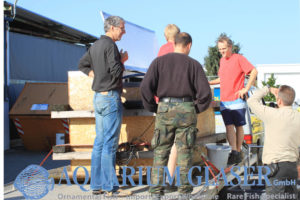
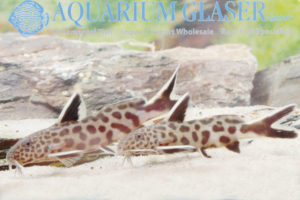
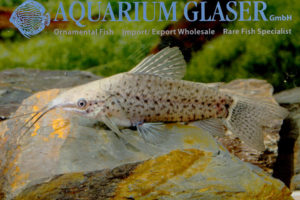
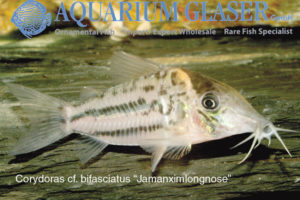
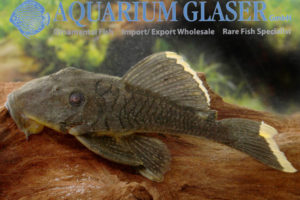
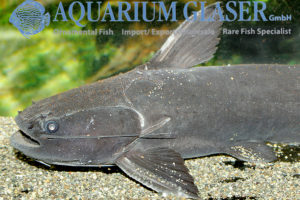
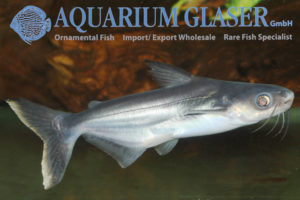
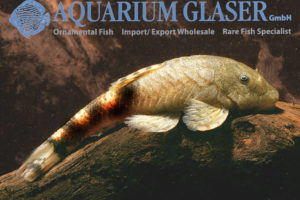
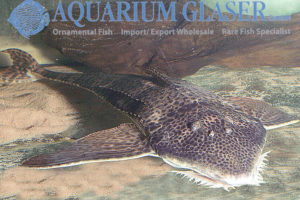
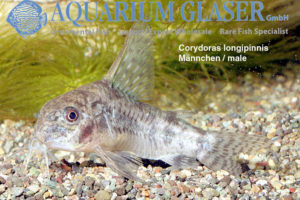
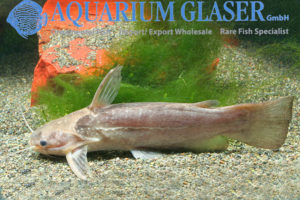
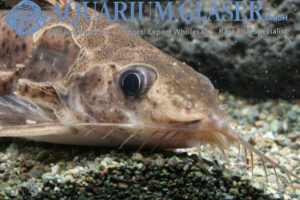
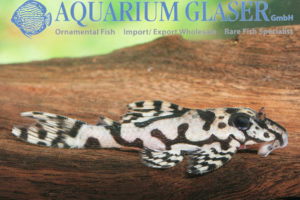
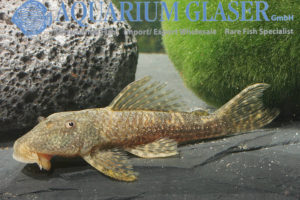
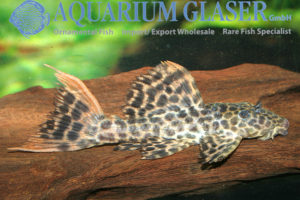
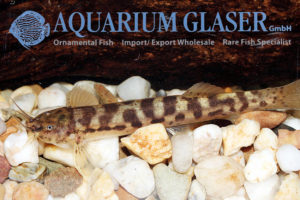
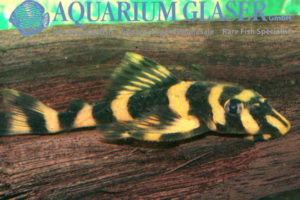
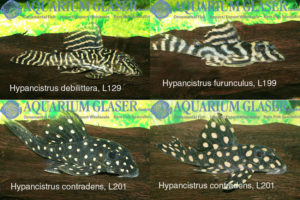
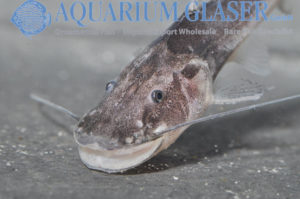
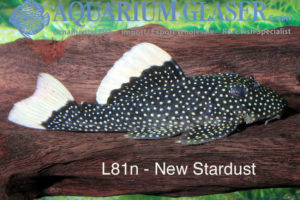
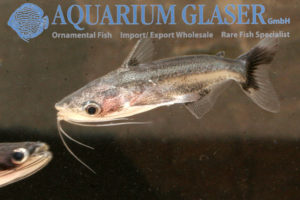
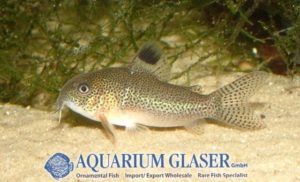
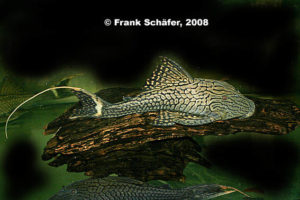
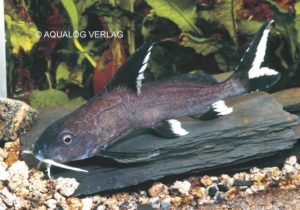
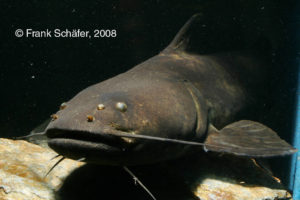
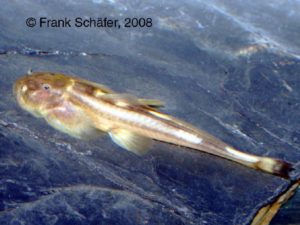
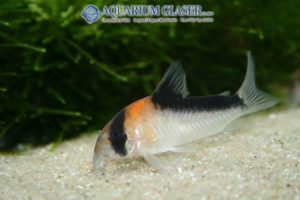
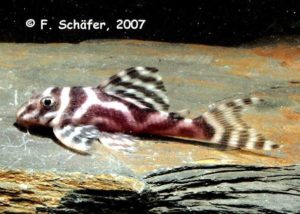
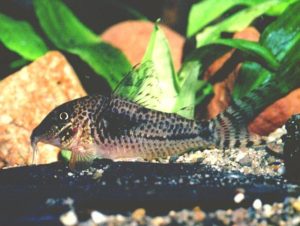
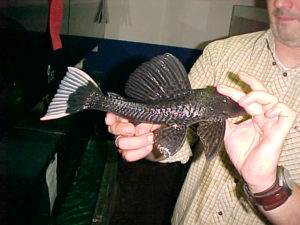
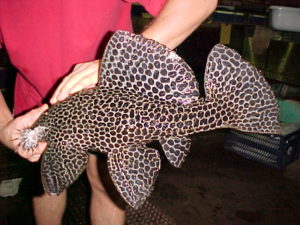
-300x225.jpg)
